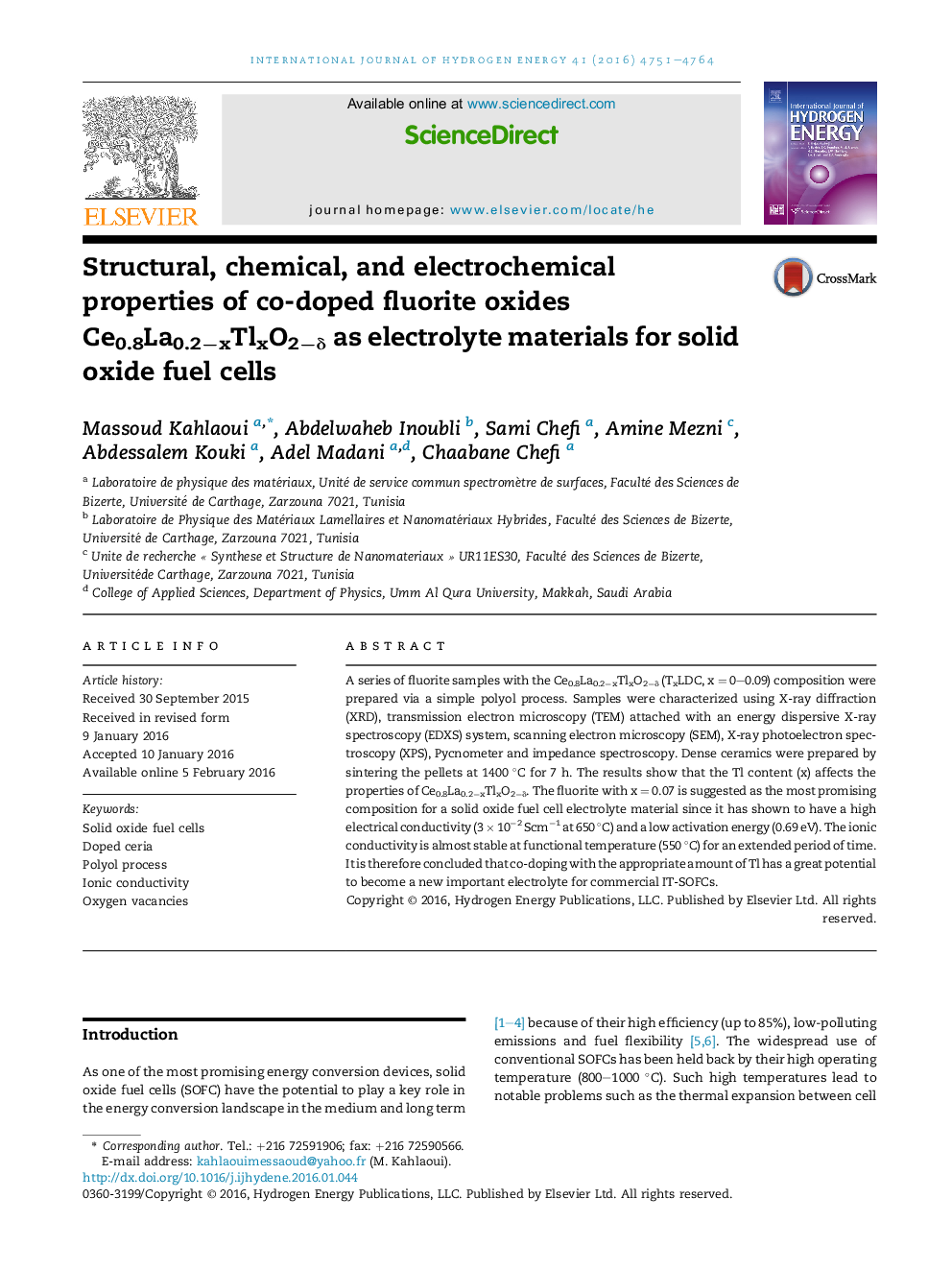| Article ID | Journal | Published Year | Pages | File Type |
|---|---|---|---|---|
| 1271162 | International Journal of Hydrogen Energy | 2016 | 14 Pages |
•The system Ce0.8La0.2−xTlxO2−δ (TxLDC) has been investigated for the first time.•The conductivity of T0.07LDC is 3 × 10−2 Scm−1 at 650 °C with low activation energy.•Its conductivity is higher than the maximum value reported for the SDC and GDC.•T0.07LDC is much less costly than that of SDC and GDC.
A series of fluorite samples with the Ce0.8La0.2−xTlxO2−δ (TxLDC, x = 0–0.09) composition were prepared via a simple polyol process. Samples were characterized using X-ray diffraction (XRD), transmission electron microscopy (TEM) attached with an energy dispersive X-ray spectroscopy (EDXS) system, scanning electron microscopy (SEM), X-ray photoelectron spectroscopy (XPS), Pycnometer and impedance spectroscopy. Dense ceramics were prepared by sintering the pellets at 1400 °C for 7 h. The results show that the Tl content (x) affects the properties of Ce0.8La0.2−xTlxO2−δ. The fluorite with x = 0.07 is suggested as the most promising composition for a solid oxide fuel cell electrolyte material since it has shown to have a high electrical conductivity (3 × 10−2 Scm−1 at 650 °C) and a low activation energy (0.69 eV). The ionic conductivity is almost stable at functional temperature (550 °C) for an extended period of time. It is therefore concluded that co-doping with the appropriate amount of Tl has a great potential to become a new important electrolyte for commercial IT-SOFCs.
